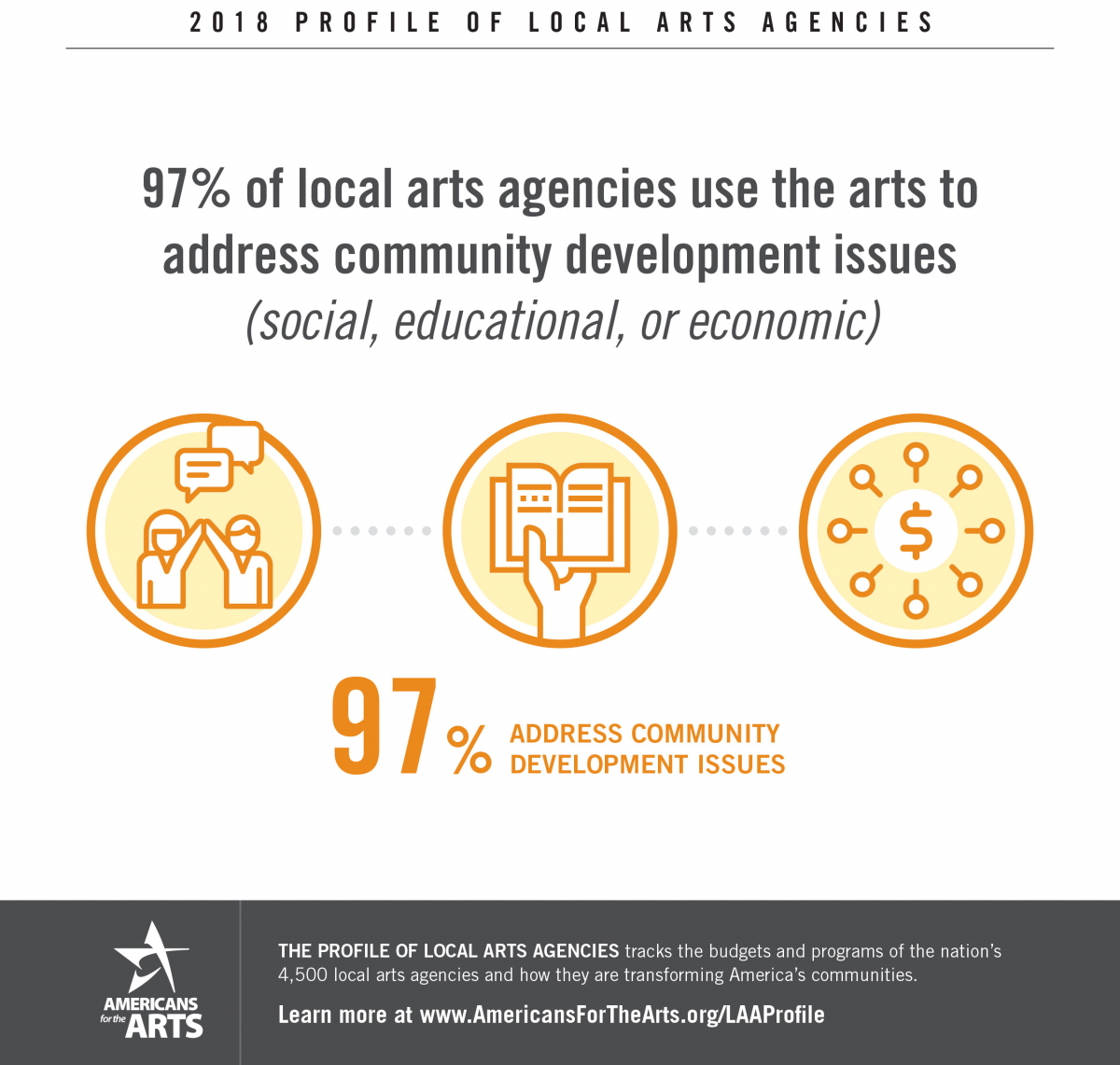A Fresh Way to Learn About Local Arts Agencies
Posted by Apr 11, 2019

Randy Cohen
I conducted my first survey of local arts agencies in 1991. It was all paper in those days. We didn’t even ask for fax numbers because too few had one! Over the years we have fielded dozens of local arts agency (LAA) surveys—some were short and easy to fill out and provided useful information, but lacked adequate depth; others were comprehensive and extremely informative, but were too long and hard for respondents to complete. While the paper surveys became online surveys and technology has made distribution more expansive, what remains as pressing as ever is the need for reliable, relevant, and easily accessible information about the LAAs—research that provides early alerts about new trends, drives discourse about how the industry is evolving, and simply allows LAAs to see how they compare to their peers.
In 2018, Americans for the Arts implemented a new annual survey to accomplish just this—The Profile of Local Arts Agencies. The Profile collects a core set of LAA indicators—budget trends, partnerships, community impact programs, policies and programs—and supplements those with rotating modules that enable deeper dives into specific and timely issues. The first two modules focused on (1) grantmaking and equitable investment in the arts, and (2) salaries, compensation, and demographics of LAA staff.
I am excited to report that we now have a fabulous suite of reports, infographics, data tables, and online tools freely available on our Profile of Local Arts Agencies website.
There are multiple ways you can put the Profile findings to work for you.
- For those who care about how the arts strengthen their communities socially, educationally, and economically, tracking LAA programs and services is a great place to begin. Or perhaps you are looking to justify a partnership with your Chamber of Commerce—your board will be delighted to know that more than half of LAAs are already doing so. All of these findings (and so much more) are in the full 126-page report.
- Is it time to build your staffing budget? The overall average salary for the executive director position is $81,476 (with a range from less than $20k to greater than $250k). The Staff Salary, Compensation, and Demographics report provides extensive details on 20 different LAA staff positions.
- Perhaps you simply want to know how your LAA stacks up statistically against similar LAAs from across the country (e.g., “How much local government support is common for other LAAs like mine that award grants, do cultural planning, have strategic alliances, and serve an urban community?”). Visit your new LAA Dashboard—an interactive DIY research and analysis tool! We provide an easy step-by-step guide, you do your analysis, create a graphic, download it, and you’re ready to roll. Give it a try and let us know how it works for you.
 I remain continually inspired by how the LAA movement has evolved. In those early days, for example, less than a quarter of LAAs were using the arts to address community development issues. Today, that figure is more than 90 percent. There has always been about one-third of LAAs that have worked on cultural planning within the previous five years—and those that do have consistently seen greater rates of budget growth than those that don’t. An exciting evolution over the past decade, however, is an increase in broader community-wide plans that include the arts among all civic priorities. We also see LAAs pushing themselves and their communities on the issues of diversity, equity, and inclusion. Half of LAAs have diversity policies related to board, staff, or grantmaking. Yet, the data also reveal the challenges of the diversity of LAA leadership—with less than 10 percent of CEOs being a person of color, and just 45 percent feel they have the appropriate level of diversity among their board, staff, and volunteers.
I remain continually inspired by how the LAA movement has evolved. In those early days, for example, less than a quarter of LAAs were using the arts to address community development issues. Today, that figure is more than 90 percent. There has always been about one-third of LAAs that have worked on cultural planning within the previous five years—and those that do have consistently seen greater rates of budget growth than those that don’t. An exciting evolution over the past decade, however, is an increase in broader community-wide plans that include the arts among all civic priorities. We also see LAAs pushing themselves and their communities on the issues of diversity, equity, and inclusion. Half of LAAs have diversity policies related to board, staff, or grantmaking. Yet, the data also reveal the challenges of the diversity of LAA leadership—with less than 10 percent of CEOs being a person of color, and just 45 percent feel they have the appropriate level of diversity among their board, staff, and volunteers.
I would like to express my gratitude to 537 local arts agencies that completed our first Profile survey, as well as the 1,117 individuals who completed the Salary and Compensation Survey. We thank each and every one of you, as this report would not be possible without you. And to everyone reading, thank you for everything you do to advance the arts in America.





